At What Temperature Does Beef Fat Melt in Braise
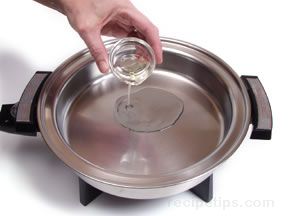
Reviewed By joner1234
"I have always struggled to end up with a lean tender rosted joint in the oven. ... read full review"
Braising is a process of slow cooking tougher cuts of meat in liquid in order to add flavor and to moisten and tenderize the meat. This technique is also known as pot-roasting. In a beef cut such as a chuck roast, there is a pattern of connective tissues and thick marbling that makes the meat tough if it is not cooked with a method that melts these tissues. Dry heat-cooking methods, such as oven roasting, do not allow the internal temperature of the meat to become high enough to break down the fat and connective tissues. If the roast is left in the oven long enough to break down the tough tissues, then the outer portions of the meat become overcooked, dry, and tough.
Braising/pot-roasting is a much more effective means for breaking down the tough fibers than any dry heat cooking method. The internal temperature of the meat reaches a level that is sufficiently high to melt the connective tissues and fat. The moisture in the pan prevents the outer portions of the meat from drying out.
The beef cuts that benefit the most from braising/pot-roasting are tougher cuts from the round, flank, plate, and chuck. Tender cuts from the loin and rib should be reserved for dry heat cooking methods. The chuck cuts are usually preferred for braising/pot roasting because of their flavor and because of the amount of marbling in the meat that melts during the cooking process, basting the meat with moisture. Among the chuck cuts that make excellent pot roasts are the chuck eye roast, the top blade chuck roast, and the seven bone roast which gets its name from the prominent bone in the roast that is shaped like a "7".
The following steps may be used to prepare a simple pot-roast:
| Pour a small amount of oil into a heated pan or pot. The pan should be only slightly larger than the cut of beef so that only a small quantity of liquid will be required for braising. |  |
| Sear the meat on all sides. | 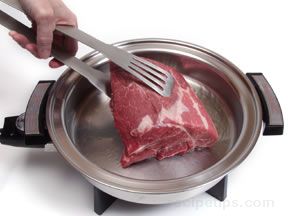 |
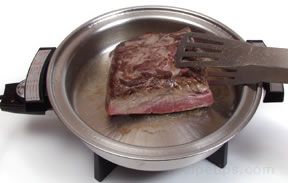 | |
| After the meat has browned, remove it from the pan and pour off most of the fat. | 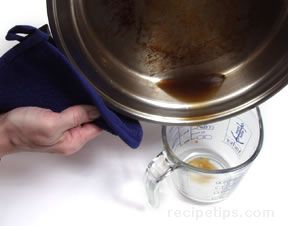 |
| Add aromatic vegetables to the pan, such as onions, carrots, garlic, and celery. Sauté the vegetables for 1 or 2 minutes. | 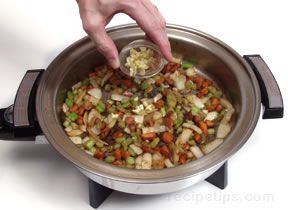 |
| Return the meat to the pan and add liquid to a level of about half way up the meat. If the liquid completely covers the meat, it is considered stewing rather than braising. The liquids that are most often used include water, stock, juice, beer, or wine. | 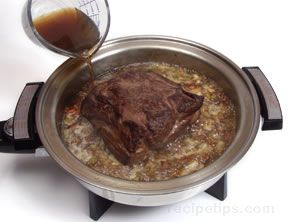 |
| Seasonings are added to the pan. | 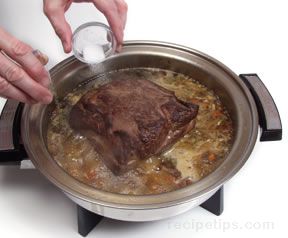 |
| The beef can be braised on the stovetop or in the oven. If it is cooked on the stove, the liquid should be brought to a boil and then the heat should be reduced to a simmer before the pan is covered. If the meat is to be braised in the oven, the meat should be cooked in a covered ovenproof pan and the oven temperature should be set at 325°F to 350°F. In both cases, the meat is allowed to cook until it is fork tender. | 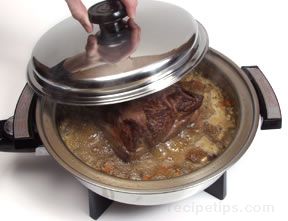 |
| When the beef is fully cooked, remove it from the pan using a tongs. Cover the meat to keep it warm while the sauce is being prepared. |  |
| The liquid in the pan can be strained, returned to the pan, and then reduced into a sauce. The sauce may also be prepared without straining the liquid, but as much fat as possible should be skimmed from the surface. | 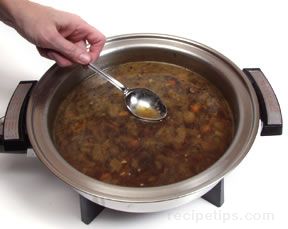 |
| The liquid is brought to a boil, which will reduce and thicken it. Cornstarch or flour may be added if the liquid does not become thick enough. | 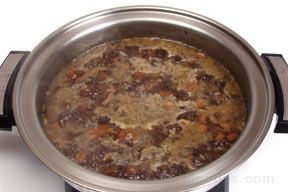 |
| Further seasoning may be added to complete the sauce. | 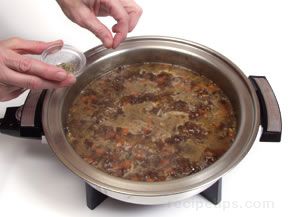 |
| The sauce is used as an accompaniment for the braised beef. |  |
Beef that has been braised is always cooked until it is well done because moist heat cooking methods permeate the meat with hot liquid and high temperatures, making the meat tender and flavorful. However, braised dishes like pot roast can be overcooked in spite of the moist heat cooking method. Pot roast that is cooked too long will fall apart and begin to lose moisture and tenderness.
Source: https://www.recipetips.com/kitchen-tips/t--383/braising-beef.asp
0 Response to "At What Temperature Does Beef Fat Melt in Braise"
Post a Comment